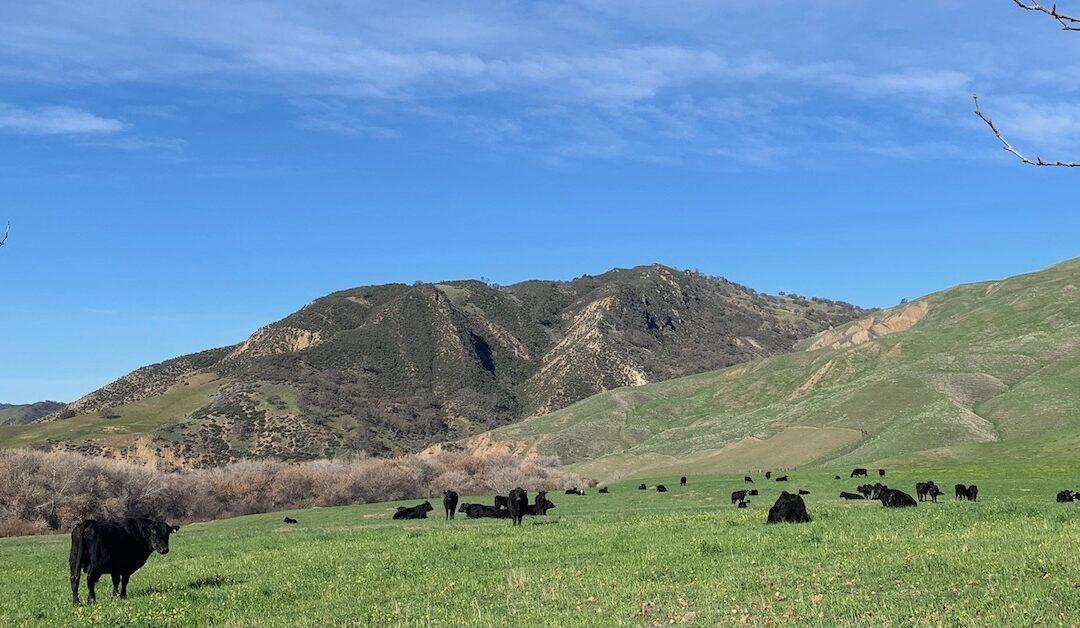As awareness around health and sustainability grows, more consumers are turning to options like grass-fed beef and pasture-raised pork from regenerative farms. Choosing these products, especially when purchased directly from local ranches like Midori Ranch, offers a wide array of benefits compared to conventional, mass-produced meat or even what’s available at premium grocery stores. Here’s why regenerative agriculture, grass-fed beef, and pasture-raised pork are better for your body, the planet, and your taste buds.
For more insights into the role of nutrition in sustainable health, check out Focused Trainers, a leader in sustainable health and fitness practices.
What is Regenerative Agriculture?
Regenerative agriculture is a progressive farming approach that goes beyond sustainability by actively working to restore and enhance the ecosystem, particularly soil health, biodiversity, and carbon storage. Through techniques like rotational grazing, composting, and cover cropping, regenerative farming nurtures rich, resilient soils that store carbon, manage water effectively, and support diverse plant and animal life. This contrasts sharply with conventional practices, which often rely on synthetic fertilizers, pesticides, and monoculture, all of which can degrade soil health and contribute to pollution and greenhouse gas emissions.
At Midori Ranch, regenerative farming is central to creating a sustainable ecosystem where every animal and process contributes to environmental health. By choosing regenerative products, consumers can enjoy the benefits of regenerative agriculture while supporting a farming approach that can adapt to a changing climate. For more details on regenerative farming for health, see the Regenerative Agriculture Initiative by the Rodale Institute.
Health Benefits of Grass-Fed Beef and Pasture-Raised Pork from Regenerative Farms
Choosing grass-fed beef and pasture-raised pork from regenerative farms offers distinct health advantages. Grass-fed beef health benefits include a superior nutritional profile compared to grain-fed beef, with more omega-3 fatty acids, higher levels of antioxidants like vitamin E, and a richer concentration of essential minerals. Similarly, pasture-raised pork contains higher omega-3s and lower inflammatory omega-6s than conventional pork. A varied diet from natural pasture results in a more nutrient-dense product.
In addition, pasture-raised animals generally aren’t subjected to the heavy antibiotic and hormone use typical of factory-farmed meat. With fewer additives and a cleaner nutritional profile, grass-fed and pasture-raised meats can support regenerative farming for health by offering a natural, chemical-free product that promotes vitality. Read Food as Medicine: Exploring the Health Benefits of Sustainable Eating to learn more.
Environmental Advantages of Sustainable Farming Practices
One of the most compelling reasons to choose regenerative agriculture products is their positive environmental impact. Livestock raised on regenerative farms contribute to ecosystem health rather than depleting it. For example, grazing animals naturally fertilize the soil, and when rotated across different areas, they prevent overgrazing and erosion. Healthy soil, in turn, captures and stores carbon from the atmosphere, helping combat climate change.
Supporting regenerative farming for health reduces reliance on factory farming, which is a major contributor to pollution, deforestation, and biodiversity loss. Rather than depending on fossil-fuel-based fertilizers and pesticides, regenerative farms use natural processes to reduce pollution and create a healthier landscape for future generations.
Direct-to-Consumer Benefits: Freshness, Quality, and Transparency
Buying directly from a regenerative farm like Midori Ranch provides unique benefits that are often unavailable in stores, even premium supermarkets. With a shorter supply chain, meat reaches your table fresher and at its peak nutritional profile. This farm-to-consumer model preserves both the meat’s nutrients and flavor, providing superior quality.
Transparency is another key advantage. Purchasing directly from a ranch gives you a firsthand look at how animals are raised, ensuring they meet ethical, environmentally-friendly standards. This transparency is often missing in grocery chains, where labels don’t always guarantee regenerative farming for health or high animal welfare standards.
Why Local Supermarket Meat Isn’t the Same as Direct-to-Consumer Options
For those in the Los Altos area, premium grocers such as Andronico’s, Safeway, and Whole Foods offer grass-fed and pasture-raised options, but even these can fall short in certain ways. Here’s how direct-to-consumer options like Midori Ranch compare to what you’d find at local supermarkets:
- Quality and Freshness: Grocery store meat often passes through multiple distribution centers and may sit in storage before reaching shelves. In contrast, direct-to-consumer options have a much shorter supply chain, which means fresher, more nutrient-rich products.
- Transparency in Sourcing: While grocery store labels may read “grass-fed” or “pasture-raised,” these terms don’t always guarantee regenerative farming for health or sustainable practices. Buying from Midori Ranch ensures you’re getting products that align with your environmental and health values.
- Environmental Impact: Even premium grocery stores contribute to a larger carbon footprint due to extensive transport. Purchasing directly from a local farm like Midori Ranch helps minimize emissions and supports sustainable infrastructure.
- Cost and Value: Supermarket prices for grass-fed and pasture-raised meats include markups covering transport, shelf space, and handling. Buying directly from a ranch often provides superior quality at a comparable or lower price. Supporting local farms keeps more money in the local economy, helping ensure the benefits of regenerative agriculture.
Choosing a Better Future for Health and the Planet
Switching to regenerative agriculture products like grass-fed beef and pasture-raised pork from sources like Midori Ranch benefits both personal health and the planet. By choosing nutrient-dense, ethically raised meats, you’re opting for a diet that’s as good for your body as it is for the environment. Additionally, buying directly from farms provides access to fresher, high-quality food, transparent sourcing, and a more sustainable supply chain.
Supporting regenerative agriculture isn’t just about better food—it’s about building a future where health and sustainability go hand in hand. Whether you’re looking to optimize your diet or reduce your environmental impact, regenerative meat products are a choice that nourishes both.
FAQs
1. What are the health benefits of grass-fed beef compared to grain-fed beef?
Grass-fed beef is typically richer in omega-3 fatty acids, antioxidants like vitamin E, and essential minerals. It also tends to have lower levels of unhealthy fats, making it a healthier choice than grain-fed beef.
2. Why is pasture-raised pork considered healthier than conventionally raised pork?
Pasture-raised pork has a more natural diet, leading to higher omega-3 content and lower inflammatory omega-6s. Additionally, it often contains fewer antibiotics, making it a cleaner choice for health-conscious consumers.
3. How does regenerative farming benefit the environment?
Regenerative farming promotes soil health, improves biodiversity, and captures carbon from the atmosphere. This approach helps reduce erosion, pollution, and greenhouse gas emissions, contributing to a more sustainable ecosystem.
4. What’s the difference between “grass-fed” and “pasture-raised” meat?
“Grass-fed” refers to animals primarily eating grass, while “pasture-raised” means animals are raised outdoors on pasture rather than confined. Both practices aim to create a natural, healthier diet for the animals, resulting in nutrient-rich meat.
5. Is meat from regenerative farms more expensive?
While regenerative meats can be pricier, buying directly from local farms often provides a better quality product for a comparable price. Supporting local farms also keeps funds within the community and helps fuel sustainable agriculture.



















